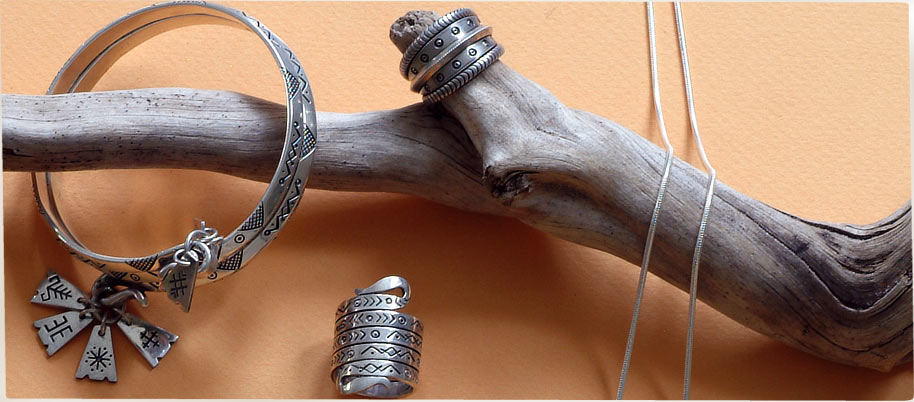
The legacy of a ancient Latvian lifestyle is reflected in the timeless symbols used in the designs of folk costumes as well as in everyday objects and buildings. This rich ethnic heritage has been retained through centuries and reveals an intrinsic part of the Latvian character itself.
LATVIAN ORNAMENTAL DESIGN
A relatively small number of principal design elements constitute the basis for the limitless variations of ornaments adorning textiles, metals, pottery, wood and other materials. The fundamental characteristic of the Latvian ornamental design is its geometric and abstract form. Traced through archaeological excavations and substantiated in Latvian folklore, some of the symbols are the visual representations of ancient deities.
The use of this graphic alphabet in various combinations enhances the intricacy of the Latvian ornamental design. Inter-relating compatible design elements into harmonious relationships is made easier by uniform 45*, 90*, 135* directional line breaks. This emphasis on angular lines, however, is not exclusive. Curves, circles and even spirals are often dictated by working techniques in metal and ceramic ornamentation.
Basic guidelines aid in orderly composition of design elements, yet, at the same time, allow for great flexibility in development of variations. As a result, today the Latvian ornamental design is readily adaptable to modern interpretations of current ideas, materials and techniques
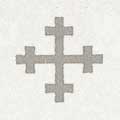 Cross of Crosses - A combination of four crosses, this symbol has been carved on ancient sacrificial stones for bestowal of divine favors. Cross of Crosses have been found decorating women’s wraps during the Iron and Bronze Ages.
Cross of Crosses - A combination of four crosses, this symbol has been carved on ancient sacrificial stones for bestowal of divine favors. Cross of Crosses have been found decorating women’s wraps during the Iron and Bronze Ages.
 Cross – Perhaps due to its simplicity the cross sign has been widely used since antiquity. Found on Early Iron Age jewelry, it has no relationship to Christianity.
Cross – Perhaps due to its simplicity the cross sign has been widely used since antiquity. Found on Early Iron Age jewelry, it has no relationship to Christianity.
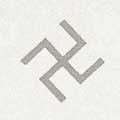 The Sign of Thunder Cross - Also known as Fire Cross, Cross of Fortune or Swastica this sign is common to all Indo-European cultures. It is the symbol of fire, thunder, light, fortune, health and prosperity. Often used to adorn women’s wraps and sashes, the variations of Thunder Cross include clockwise and counter-clockwise directions.
The Sign of Thunder Cross - Also known as Fire Cross, Cross of Fortune or Swastica this sign is common to all Indo-European cultures. It is the symbol of fire, thunder, light, fortune, health and prosperity. Often used to adorn women’s wraps and sashes, the variations of Thunder Cross include clockwise and counter-clockwise directions.
 The Sign of Sun - Sun is the dominant feature of God’s heaven. Likewise, the sign of Sun is the most frequently used element in Latvian design. In ornaments of the Early Iron Age it is a plain circle. Later it evolved into various eight-segmented units.
The Sign of Sun - Sun is the dominant feature of God’s heaven. Likewise, the sign of Sun is the most frequently used element in Latvian design. In ornaments of the Early Iron Age it is a plain circle. Later it evolved into various eight-segmented units.
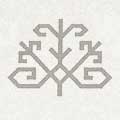 Tree of Sun - A combination of the basic design elements creates diversified symbol extensions. Such is the Tree of Sun, which represents reaching upward and growth.
Tree of Sun - A combination of the basic design elements creates diversified symbol extensions. Such is the Tree of Sun, which represents reaching upward and growth.
 The Sign of Moon - Moon is the symbol of warriors. This sign is most often found on swords, bracelets and other objects carried by warriors. Moon shapes are also used in forming pendants for fibulae.
The Sign of Moon - Moon is the symbol of warriors. This sign is most often found on swords, bracelets and other objects carried by warriors. Moon shapes are also used in forming pendants for fibulae.
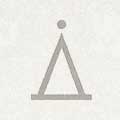 The Sign of God or Heaven - The presence of God, his love, caring and goodness is widely proclaimed in dainas. It is represented by a slender triangular shape above a horizontal base line (Earth-mother) and with a circle at its apex – God above the expanse of the heavens. This element is extremely old and is found on metal jewelry dating to the Early Iron Age.
The Sign of God or Heaven - The presence of God, his love, caring and goodness is widely proclaimed in dainas. It is represented by a slender triangular shape above a horizontal base line (Earth-mother) and with a circle at its apex – God above the expanse of the heavens. This element is extremely old and is found on metal jewelry dating to the Early Iron Age.
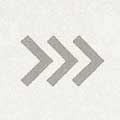 The Sign of Laima - Laima determined the destiny of people. It was believed that she lived under the threshold and was not to be disturbed by handing anything over it. The graphic fir-twig sign of Laima is attributed to the very beginnings of Latvian symbology. Besides the popular variant called „Laimas Broom”, it has relatively few other variations.
The Sign of Laima - Laima determined the destiny of people. It was believed that she lived under the threshold and was not to be disturbed by handing anything over it. The graphic fir-twig sign of Laima is attributed to the very beginnings of Latvian symbology. Besides the popular variant called „Laimas Broom”, it has relatively few other variations.
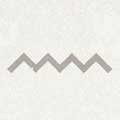 The Sign of Māra - Māra is the deity of earth and water and all the creatures within. An insight into her position within the ancient beliefs abound in dainas, and are just as often visually reflected in Latvian ornamental design. The symbol of Māra – a zigzag line – dates back to the Iron Age.
The Sign of Māra - Māra is the deity of earth and water and all the creatures within. An insight into her position within the ancient beliefs abound in dainas, and are just as often visually reflected in Latvian ornamental design. The symbol of Māra – a zigzag line – dates back to the Iron Age.
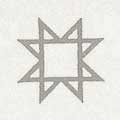 The Sign of Auseklis (Morning Star) - Of the many star design variations, Auseklis is the most prominent. In dainas it is often mentioned as a protector and contains numerous references to „star blankets” and „star coats.”
The Sign of Auseklis (Morning Star) - Of the many star design variations, Auseklis is the most prominent. In dainas it is often mentioned as a protector and contains numerous references to „star blankets” and „star coats.”
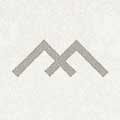 The Sign of Jumis - Depicting a double spiked stalk of grain, Jumis symbolizes fertility and prosperity. Found on Iron Age wraps and jewelry, it is a popular element used in subsequent textile adornments.
The Sign of Jumis - Depicting a double spiked stalk of grain, Jumis symbolizes fertility and prosperity. Found on Iron Age wraps and jewelry, it is a popular element used in subsequent textile adornments.
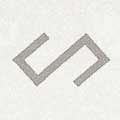 The Sign of Zalktis (Serpent) - This sign, found on women’s apparel and jewelry, represents the ancient serpent cult. In Latvian mythology the harmless snake Zalktis was the guardian of wealth and well-being and therefore had to be protected and cared for.
The Sign of Zalktis (Serpent) - This sign, found on women’s apparel and jewelry, represents the ancient serpent cult. In Latvian mythology the harmless snake Zalktis was the guardian of wealth and well-being and therefore had to be protected and cared for.
The use of this graphic alphabet in various combinations enhances the intricacy of the Latvian ornamental design. Inter-relating compatible design elements into harmonious relationships is made easier by uniform 45°, 90°, 135° directional line breaks. This emphasis on angular lines, however, is not exclusive. Curves, circles and even spirals are often dictated by working techniques in metal and ceramic ornamentation.
Basic guidelines aid in orderly composition of design elements, yet, at the same time, allow for great flexibility in development of variations. As a result, today the Latvian ornamental design is readily adaptable to modern interpretations of current ideas, materials and techniques.
©2010 Baltic Crossroads. All rights reserved. Design: Ante Meridiem Design
Twitter
Tweet and follow us. News, events, announcements.
Facebook
Join discussions on our wall
See our photos